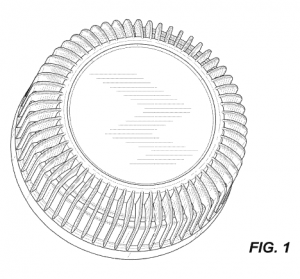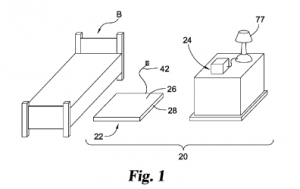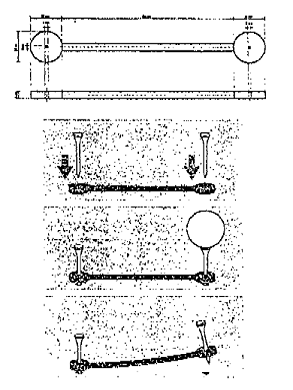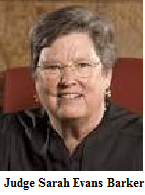Fort Wayne, Indiana – Indiana patent attorneys for Vincent P. Tippmann, Sr. Family, LLC and Tippmann Refrigeration, Inc., both of Fort Wayne, Indiana, filed an intellectual property lawsuit in the Northern District of Indiana against Gerald Tippmann of Fort Wayne, Indiana to correct ownership of Patent No. 8,220,287, “Apparatus and Method for Blast Freezing or Thawing A Product,” which was issued by the U.S. Patent Office. In addition to listing requests regarding inventorship, this Indiana patent lawsuit asks the court to, in the alternative, grant a judgment under Indiana State law of negligent misrepresentation and constructive fraud on the part of Defendant, Gerald Tippmann, and for associated relief and damages.
 Vincent P. Tippmann Sr. Family, LLC (“Tippmann Family, LLC”) claims ownership of the patent-in-suit, a technology that facilitates rapid and efficient freezing and thawing of food products. It also indicates that it is the inventing and owning company of various patents and patent applications related to apparatuses and methods for blast freezing and/or thawing of products.
Vincent P. Tippmann Sr. Family, LLC (“Tippmann Family, LLC”) claims ownership of the patent-in-suit, a technology that facilitates rapid and efficient freezing and thawing of food products. It also indicates that it is the inventing and owning company of various patents and patent applications related to apparatuses and methods for blast freezing and/or thawing of products.
Rapid freezing was historically done in blast freezers, which are expensive and result in irregular freezing rates across arranged product stacks. Plaintiffs assert that Defendant Gerald Tippmann and Vincent P. Tippmann Jr. (presumably an employee of Tippmann Family, LLC) were the first to recognize, and jointly design, test and reduce to practice a new method and system for freezing and thawing boxes or pallets of a commodity more efficiently and rapidly through the strategic arrangement of product boxes and pallets to create a directional airflow.
This Indiana patent litigation concerns that invention, U.S. Patent No. 8,220,287 (the “‘287 Patent”), for which Tippmann Family, LLC is the assignee. According to Plaintiffs, the inventor declaration for the patent-in-suit that was signed by Gerald Tippmann averred that he and Vincent P. Tippmann Jr. were co-inventors and that the invention “was not in public use or on sale in the United States of America more than one year prior to filing this application.”
In May 2012, Gerald Tippmann left the employ of Tippmann Refrigeration, and became associated with Tippmann Construction, LLC (“Tippmann Construction”), a competitor of Tippmann Family, LLC. The owners of the Tippmann Family, LLC and the competing Tippmann Construction are relatives.
In June 2013, Gerald Tippmann and the Indiana patent lawyer for Tippmann Construction prepared a supplemental inventor declaration and disclosure statement to “clarify” statements Gerald Tippmann had made in his previous disclosures in the Tippmann Family, LLC applications. According to Plaintiffs, this supplemental declaration directly contradicts all previous declarations made by Gerald Tippmann with regard to his joint inventorship with Vincent P. Tippmann Jr., especially including its assertions that Gerald Tippmann was the sole inventor of the patent-in-suit.
In this supplemental declaration, Gerald Tippmann also indicates that he had been “mistaken” regarding the initial public display of the invention. Specifically, he claims that he had commercialized and publically used the underlying invention while in the employ of an unrelated Florida company called Citrus World on or about 1996-97.
The complaint, filed by Indiana intellectual property counsel, lists the following causes of action:
• Declaratory Judgment of Joint Inventorship, Correction of Inventorship under 35 U.S.C. § 256
• Negligent Misrepresentation under Indiana State Law
• Constructive Fraud under Indiana State Law
Plaintiffs ask that the court:
(a) Find that Gerald Tippmann and Vincent P. Tippmann Jr. are the true inventors of the ‘287 Patent;
(b) Find that Gerald Tippmann’s actions at Citrus World were an experimental use, not a public use or a commercialization, and that the invention was not ready for patenting at that time;
(c) Estop Gerald Tippmann from declaring the assertions set forth in his Declaration in the related continuation and divisional applications associated with the ‘287 Patent and any future related patents that he has assigned to the Tippmann Family, LLC;
(d) Award to Tippmann Family, LLC all costs and attorney’s fees;
(e) Alternatively to (a)-(d), find that Gerald Tippmann has committed negligent misrepresentation with respect to the actions described above, and that the Tippmann Family, LLC be awarded costs, attorney’s fees, and damages; and
(f) Alternatively to (a)-(d), find that Gerald Tippmann has committed constructive fraud with respect to the actions described above, and that the Tippmann Family, LLC be awarded costs, attorney’s fees, and damages.
Practice Tip: Public disclosure – as Gerald Tippmann has apparently claimed – is often, but not always, a bar to patentability. Indiana inventors are advised to consult with an Indiana patent lawyer to determine whether their invention(s) can be protected under U.S. patent law.
Continue reading
 D838,171 (the “‘171 Patent”) (collectively the “Patents in Suit”). CSI is seeking preliminary and/or permanent injunctions, attorneys’ fees, costs, and any other relief the Court deems proper.
D838,171 (the “‘171 Patent”) (collectively the “Patents in Suit”). CSI is seeking preliminary and/or permanent injunctions, attorneys’ fees, costs, and any other relief the Court deems proper. Indiana Intellectual Property Law News
Indiana Intellectual Property Law News






 Vincent P. Tippmann Sr. Family, LLC (“Tippmann Family, LLC”) claims ownership of the patent-in-suit, a technology that facilitates rapid and efficient freezing and thawing of food products. It also indicates that it is the inventing and owning company of various patents and patent applications related to apparatuses and methods for blast freezing and/or thawing of products.
Vincent P. Tippmann Sr. Family, LLC (“Tippmann Family, LLC”) claims ownership of the patent-in-suit, a technology that facilitates rapid and efficient freezing and thawing of food products. It also indicates that it is the inventing and owning company of various patents and patent applications related to apparatuses and methods for blast freezing and/or thawing of products.